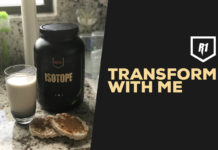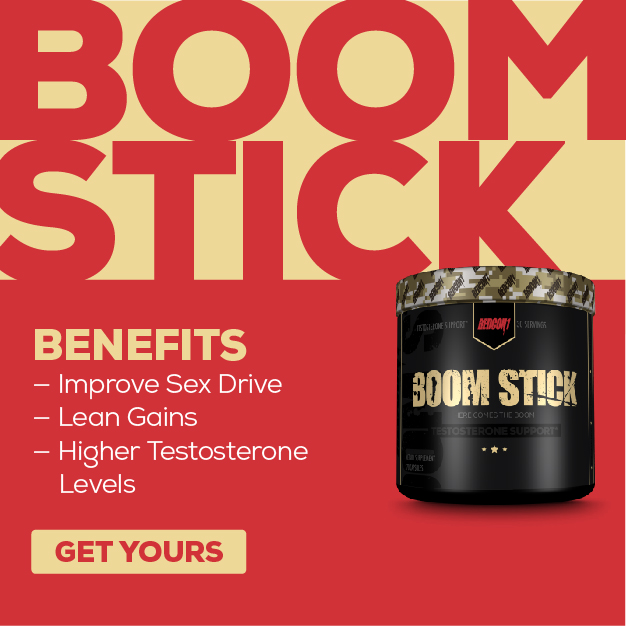
RedCon1 – Gelatin and Bodybuilding?
The title of this article may have you slightly confused. “Gelatin and Bodybuilding?” Gelatin makes your mind automatically think of jello, the sweet dessert a lot of people crave. But when you dig into the research and understand exactly what gelatin is composed of, you’ll come to find that this sweet dessert may actually be extremely beneficial for bodybuilders. To ensure we are on the same page, we must cover some basics. One of the major dipeptides we will be referring to during this article is hydroxyprolylglycine which consists of a hydroxylproline and a glycine part. This is essentially the most important metabolite that appears withinin your blood after eating gelatin/collagen (1.) It seems to not only exhibit anabolic effects within skeletal muscle tissue but also improve collagen resynthesis, skin health, bone health, and a number of other beneficial aids for bodybuilders.
First, lets look at a study from Kitakaze et al that observed the collagen derived dipeptide hydroxyprolyl-glycine and how it promotes C2C12 myoblast differentiation and myotube hypertrophy. They state: “The majority of studies on possible roles for collagen hydrolysates in human health have focused on their effects on bone and skin. Hydroxyprolyl-glycine (Hyp-Gly) was recently identified as a novel collagen hydrolysate-derived dipeptide in human blood. However, any possible health benefits of Hyp-Gly remain unclear. Here, we report the effects of Hyp-Gly on differentiation and hypertrophy of murine skeletal muscle C2C12 cells. Hyp-Gly increased the fusion index, the myotube size, and the expression of the myotube-specific myosin heavy chain (MyHC) and tropomyosin structural proteins. Hyp-Gly increased the phosphorylation of Akt, mTOR, and p70S6K in myoblasts, whereas the phosphatidylinositol 3-kinase (PI3K) inhibitor LY294002 inhibited their phosphorylation by Hyp-Gly. LY294002 and the mammalian target of rapamycin (mTOR) inhibitor rapamycin repressed the enhancing effects of Hyp-Gly on MyHC and tropomyosin expression. The peptide/histidine transporter 1 (PHT1) was highly expressed in both myoblasts and myotubes, and co-administration of histidine inhibited Hyp-Gly-induced phosphorylation of p70S6K in myoblasts and myotubes. These results indicate that Hyp-Gly can induce myogenic differentiation and myotube hypertrophy and suggest that Hyp-Gly promotes myogenic differentiation by activating the PI3K/Akt/mTOR signaling pathway, perhaps depending on PHT1 for entry into cells” (2.) Suggesting to a bodybuilder that hydroxyprolylglycine may actually increase hypertrophy might have them scratching their heads confused. If hydroxyprolylglycine can promote hypertrophy, obviously it seems like a simple decision to add it into your diet. But what if it does more? In fact and as previously stated, it does a tremendous amount more. Kimira et al saw it promoting differentiation of MC3T3-E1 osteoblastic cells. They found that cells treated with prolyl-hydroxyproline (Pro-Hyp) significantly upregulated gene expression of Runx2, Osterix, and Col1α1. These results indicate that Pro-Hyp promotes osteoblast differentiation. This demonstrates that Pro-Hyp has a positive effect on osteoblast differentiation with upregulation of Runx2, Osterix, and Collα1 gene expression (3.)
As if increased skeletal muscle tissue and increased bone health was not enough, it also promotes cartilage resynthesis and overall healthy joints. In vivo, collagen hydrolysate (CH) and prolyl-hydroxyproline (Pro-Hyp) inhibited the loss of chondrocytes and thinning of the articular cartilage layer caused by phosphorus-induced degradation. In the in vitro study, CH and Pro-Hyp did not affect chondrocyte proliferation but inhibited their differentiation into mineralized chondrocytes. A combination of amino acids such as proline, hydroxyproline and prolyl-hydroxyprolyl-glycine did not affect chondrocyte proliferation or differentiation. Moreover, CH and Pro-Hyp caused two and threefold increases, respectively, in the staining area of glycosaminoglycan in the extracellular matrix of ATDC5 cells. RT-PCR indicated that Pro-Hyp increased the aggrecan mRNA level approximately twofold and decreased the Runx1 and osteocalcin mRNA levels by two-thirds and one-tenth, respectively (4.) Even more so, Shaw et al actually looked at vitamin c enriched gelatin supplementation before intermittent activity and how it augments collagen synthesis. Their study had eight healthy male subjects who completed a randomized, double-blinded, crossover-design study in which they consumed either 5 or 15 g of vitamin C-enriched gelatin or a placebo control. After the initial drink, blood was taken every 30 min to determine amino acid content in the blood. A larger blood sample was taken before and 1 h after consumption of gelatin for treatment of engineered ligaments. One hour after the initial supplement, the subjects completed 6 min of rope-skipping to stimulate collagen synthesis. This pattern of supplementation was repeated 3 times/d with ≥6 h between exercise bouts for 3 d. Blood was drawn before and 4, 24, 48, and 72 h after the first exercise bout for determination of amino-terminal propeptide of collagen I content. The results showed that supplementation with increasing amounts of gelatin increased circulating glycine, proline, hydroxyproline, and hydroxylysine, peaking 1 h after the supplement was given. Engineered ligaments treated for 6 d with serum from samples collected before or 1 h after subjects consumed a placebo or 5 or 15 g gelatin showed increased collagen content and improved mechanics. Subjects who took 15 g gelatin 1 h before exercise showed double the amino-terminal propeptide of collagen I in their blood, indicating increased collagen synthesis. They could conclude from this data that adding gelatin to an exercise program improves collagen synthesis and could play a beneficial role in injury prevention and tissue repair (5.)
Gelatin, or more specifically hydroxyprolylglycine, clearly has more benefits than just satisfying a sweet tooth. From increased hypertrophy to increased bone/joint health, its a very simple addition you can make to your daily diet protocol to enhance progression.
References
- Identification of food-derived collagen peptides in human blood after oral ingestion of gelatin hydrolysates. Iwai K, Hasegawa T, Taguchi Y, Morimatsu F, Sato K, Nakamura Y, Higashi A, Kido Y, Nakabo Y, Ohtsuki K. J Agric Food Chem. 2005 (https://www.ncbi.nlm.nih.gov/pubmed/16076145)
- The collagen derived dipeptide hydroxyprolyl-glycine promotes C2C12 myoblast differentiation and myotube hypertrophy. Kitakaze T, Sakamoto T, Kitano T, Inoue N, Sugihara F, Harada N, Yamaji R. Biochem Biophys Res Commun. 2016 (https://www.ncbi.nlm.nih.gov/pubmed/27553280)
- Collagen-derived dipeptide prolyl-hydroxyproline promotes differentiation of MC3T3-E1 osteoblastic cells. Yoshifumi Kimira, Kana Ogura, Yuri Taniuchi, Aya Kataoka, Naoki Inoue, Fumihito Sugihara, Sachie Nakatani, Jun Shimizu, Masahiro Wada, Hiroshi Mano. Biochem Biophys Res Commun. 2014 (https://www.ncbi.nlm.nih.gov/pubmed/25285626)
- Chondroprotective effect of the bioactive peptide prolyl-hydroxyproline in mouse articular cartilage in vitro and in vivo. Nakatani S, Mano H, Sampei C, Shimizu J, Wada M. Osteoarthritis Cartilage. 2009 (https://www.ncbi.nlm.nih.gov/pubmed/19615963)
- Vitamin C–enriched gelatin supplementation before intermittent activity augments collagen synthesis. Gregory Shaw, Ann Lee-Barthel, Megan LR Ross, Bing Wang, Keith Baar. Am J Clin Nutr. 2017 (https://www.ncbi.nlm.nih.gov/pubmed/27852613)


















